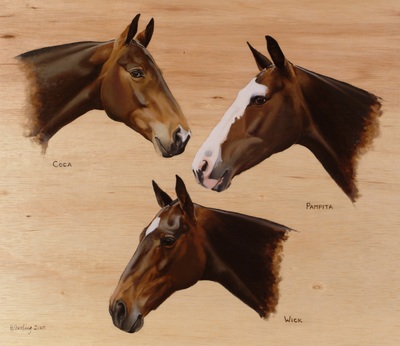
He said his primary inspiration is a 19th-century Cuban realist painter, Guillermo Collazo (1850-1896), who spent his later career in Paris.Ī green murkiness characterizes the paintings depicting the river of Almanza's memory. During a visit with Seven Days at the Old North End house where Almanza and Wiseman were staying, the artist hesitated to address politics, saying only, "The political situation in Cuba is tricky, especially with artists." Whether the painting references a political situation in which a native-grown movement prevails against evil is unclear. Animals observe the standoff from a shadowy border realm, some of whom become apparent only after a moment: a turtle, an owl. Encroaching on the latter, the devil's foot turns translucent. The painting is split diagonally between a roiling wave of darkness - the devil's domain - and daylight. It's clear who's winning: The plant is encircled by a bright yellow-orange halo, while the devil glances with surprise at his fingers, which have turned to purple-tipped flames. In "The Devil and the Güao Plant, a Dispute of Hierarchy in the Mountains," a poisonous native plant faces off against the supreme figure of evil. The couple poses against a fecund, shadowy background of flowers and plants that reveals more the longer one looks: three small, dark, gargoyle-like faces peering out at the viewer a mass of crawling worms scurrying beetles. A grinning man with red eyes, an exposed rib cage and a rotting heart rests his hand on the breast of a woman who seems to fade away into a veil of pale flowers. "The Martyrdom of a Friend" ("una amiga," the term for a female friend, is part of the Spanish title painted on the canvas) is a horrifying double portrait reminiscent of a marriage picture. Weightier shadows characterize the larger, 51-inch-square paintings in the show. Up close, Almanza's brushwork is surprisingly thick and blunt, its assured daubs easily conjuring a naturalistic pose. The first one, "Kalea Resting in the Garden," a 24-inch-square portrait of Wiseman, shows the artist's facility with depicting natural light in the bars of shadow falling across the subject's face. Many of the paintings explore light and shadow in a style of realism blended with symbolism. The title also quotes Sam Cooke's line "I was born by the river," from his song "A Change Is Gonna Come." Aretha Franklin's cover of it, a favorite of Almanza's, opens the soundtrack.

Almanza left home at age 15 to pursue an arts education in Las Tunas and Havana, and his family later moved, so the place is now a memory for the artist. "Born by the River" refers to Almanza's birthplace in the Cuban countryside between the Yáquimo and Sevilla rivers. The artist statement is in both English and Spanish, and descriptions of Cuban myths and legends, grandparents' passed-down stories, and the properties of native plants pepper the labels. Sixteen of Almanza's paintings, most depicting lush river or wilderness scenes, fill the walls, while a soundtrack of Cuban music chosen by the artist plays over speakers. The show is like a portal to another world. In April, Almanza finally received his green card, which allowed him to spend a few weeks in Burlington, give a talk and attend the opening this is the first of his exhibitions outside Cuba that he has been able to attend. Lacy has been friends with Almanza's American wife, Kalea Wiseman, since the two women studied abroad together in Cuba during college, in 2011. That's when Mary Lacy, one of the artists Trafton represents, connected her with Almanza, a 32-year-old artist from Cuba. The current exhibition, "Born by the River," a solo show by Orlando Almanza, has been in the works for nearly as long: Gallery owner and director Patricia Trafton began planning it in the fall of 2020.

.jpg)
Burlington's Soapbox Arts, in the Soda Plant on Pine Street, has become a destination for viewing the work of emerging artists since it opened in 2019.


 0 kommentar(er)
0 kommentar(er)
